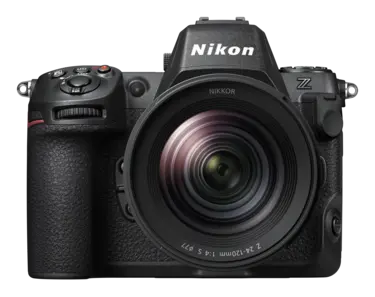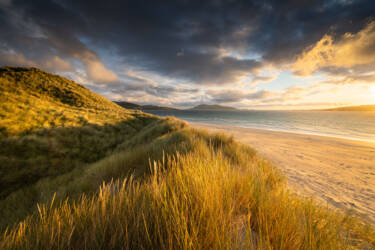Nikon Ambassadors Daisy Gilardini, Stefan Forster, Bart Heirweg and Creator Norris Niman share their top tips for photographing snow, in the latest series of Photo Finish
Next up in our Photo Finish series is snowscapes. With frost, snow and ice well on its way, it’s the perfect time to slip on your coat – and thermals – and get creative with your camera, whether you’re a beginner or professional.
First up: prepare for the snow
Prepping like an Arctic explorer isn’t necessarily an exaggeration. Essentials include thermal base layers, mid-layers, waterproof outer jackets and trousers, a hat, stout boots and two or three pairs of gloves. Plus, hand warmers can keep your hands and your battery warm in your backpack.
Top tip: Always bring an extra camera battery and keep your spare batteries on your body as batteries are affected by cold temperatures and are best kept at room temperature.
Nikon Team
Nikon Ambassador and landscape photographer Bart Heirweg always advises to not overlook how truly cold you can get standing in deep snow for a long period of time. Snowshoes and thick socks are a must. “Always remember that snow can transform even a simple landscape, so you don’t always have to go far from home if it’s been snowing. You might find shots around you which might work in the snow but not in other conditions.”
Nikon Ambassador and wildlife photographer Daisy Gilardini agrees that ensuring warmth is not just about comfort, but essential for maintaining the focus on the photography. Her top tip? Protect your gear as well as yourself. “When it’s snowing use a lens hood and regularly check your lens for snow accumulation, especially if the wind is blowing,” advises Daisy. “When you are back indoors be cautious of condensation forming. Letting your camera acclimate in your backpack for a few hours can help it warm up slowly without creating condensation.”
Feeling nervous going out in the snow? Outdoor and adventure photographer Norris Niman suggests becoming familiar with your camera at home first. “Sit at home and play with the settings and the buttons so that you know where everything is and can find it even in the dark with gloves on.”
When is the best time to photograph snow?
Blue and golden hour is the best time to capture snowscapes. These pre sunrise and post sunset moments have a warm glow that pops against the crisp white snow, often resulting in stunning photographs.
Use a cool White Balance to enhance the frosty snow and blue hues in the sky (around an 8000K White Balance is a good starting point for snow). Have a play around with the White Balance and if it’s too blue, crank it up a bit higher, or if it is too much pink, dial it down.
Keep exposure in mind. “The bright snow surface can deceive your camera meter, often resulting in underexposed images,” Daisy explains. “Always check your histogram. On overcast days, consider overexposing. On bright sunny days, be cautious not to overexpose the highlights of the snow.
Kit up
Zoom or prime lens? Bart prefers the flexibility of zooms over primes. “It’s often difficult to avoid distracting details such as wires using a wide-angle prime lens. A zoom lens allows you to refine the composition better when you can’t get closer, giving more opportunities,” he says.
If you only use one lens
Both Norris and Bart agree if you’re going to bring one lens with you, make it the NIKKOR Z 24-70mm f/2.8 S. “This lens is magical because you can switch all the way from 24mm to 70mm focal length,” says Norris, “but if you want to go wider and your shot doesn’t quite fit into your lens, you can always take a nine-photo panorama (three rows of three photographs stitched together),” he adds. “Let’s say you’re shooting a skier on a massive mountain and you’re a little too close. You can start with 24mm focal length, and then move your camera slightly to the left and right, capturing a panorama as you go to add drama to your skier.”
Next step lens
Invest in a telephoto lens such as the NIKKOR Z 70-200mm f/2.8 VR S. “I like to use the 70-200mm to create a blurry foreground while really zoomed in, a compressed subject over a white background and then a dramatic sky on top of that,” Norris explains.
Complete the premium f/2.8 trinity with the ultra-wide angle NIKKOR Z 14-24mm f/2.8 S (want to read more about our NIKKOR trinities? Click here).
More lenses
Landscape photographers often carry a telephoto lens to ‘crop’ into scenes. With that in mind, the NIKKOR Z 24-200mm f/4-6.3 VR would make a fine FX wide-angle-to-telephoto, one-lens setup.
The NIKKOR Z 14-30mm f/4 S is a great landscape lens for both FX and DX photographers, providing the latter with a 35mm equivalent 21-45mm. Couple that with the NIKKOR Z 24-120mm f/4 S will cover you from ultra-wide 14mm to super-tele 120mm.
The NIKKOR Z 100-400mm f/4.5-5.6 VR S and NIKKOR Z 180-600mm f/5.6-6.3 are stunning zooms for wildlife photography, the latter meaning you can shoot a small bird on a tree at a 600m telephoto end and still capture an insect at your feet at 180mm.
Best for DX users
If you’re a DX user (Nikon Z fc, Z 30, Z 50) add the NIKKOR Z DX 16-50mm f/3.5-6.3 VR and NIKKOR Z DX 50-250mm f/4.5-6.3 VR to your kitbag. That provides you with a huge 12-250mm zoom range (18-375mm, 35mm equivalent on a full-frame camera). Alternatively, for a one-lens setup try the NIKKOR Z DX 18-140mm f/3.5-6.3 VR.
Beginner snowscape challenges
Use Aperture Priority
There is a lot to concentrate on while photographing snow, so start off by using Aperture Priority. This allows you to select the aperture you would like, and the camera will choose the appropriate shutter speed. “If you’re shooting landscapes, the shutter speed doesn’t matter as much if nothing is moving,” Norris explains. If you are shooting in an automatic mode, be sure to compensate the exposure by +1 to +3 stops, otherwise your images may appear too dark. “Using Aperture Priority isn’t cheating,” Noris reminds us, “the pros use them as well. That’s what they are there for.”
Go high and low
You don’t need to be technically perfect as a beginner, but developing an eye for composition will elevate your photographs. Bart recommends varying your angles. “Often it can be difficult to find a high viewpoint to shoot down, but one or two metres can make a big difference. It also allows you to reveal details that are not visible at eyelevel.
“Next go even lower. Using a wide-angle lens, focus on enhancing the details in the foreground and shrink down to about a metre in height, but remember going low doesn’t always mean going to ground level,” Bart adds.
Enthusiast snowscape challenges
Invest in a tripod
Bart tends to use a tripod for landscape shots. “It allows you to take your time, refine your composition and really work on details,” he says. Want to have a go at long exposure? Set up your tripod in front of a flowing waterfall or capture snow stars. For best results, lower your ISO while increasing your aperture (preferably the highest) to keep your shutter open long enough, then bring your shutter speed down to between one and five seconds and shoot.
Read more: So you think you know long exposure? Try our challenges to find out
Photograph in RAW and try a dramatic dark edit
“Photographing in RAW is key,” advises Norris. “Given the tricky nature of snow, having the most data available in your file is crucial, as even the most advanced mirrorless cameras can make snow look a little too yellow or purple in harsh conditions. So, photograph in RAW not JPEG to allow yourself to focus on composition.”
Editing a RAW image of snowscapes is an art to perfect and with so many options and colours, it can be difficult to pick a theme. Norris’ recommends trying a dramatic dark edit, segregate the blue colours and darken down the sky to achieve a more muted, fairytale effect.
Read more: Why photograph in RAW?
Advanced and professional snowscape challenges
Capture snowflakes
Capturing snowflakes is easier said than done as the weather conditions are half of the challenge. Heavy snowfall makes it difficult to isolate a single snowflake, so light snow with minimal wind is ideal. Next, pick your backdrop. Look for a darker background, one with branches or leaves or go for a frame with more pop and capture a snowflake on a material like your gloves or a scarf. Norris loves photographing falling snowflakes in the foreground. He recommends starting at f/16 aperture, so the flakes are sharp.
Try a shallow depth of field for animals
Photographer and filmmaker Stefan Forster loves photographing animals, even if his main priority is landscape shots. “February is the time the owls come back to my hometown in Switzerland, and they hide in the dense bushes and trees. When there is no snow, the owls blend into the bushes and it’s nearly impossible to find them,” the Ambassador explains. “When it does snow, the background and foreground become homogeneous, and the owl comes into focus. For this specific shot (below), I tried to find an angle where the owl has no branch in the front, but I simply could not find a spot and I also did not want to chase it away. So, I took my NIKKOR Z 600mm f/4 TC VR S, set the internal teleconverter to 1.4x (840mm focal length) with an aperture of f/5.6. I was able to achieve such a beautiful shallow depth of field the viewer can’t see the branches as much.”
Get to know our Nikon Family
Nikon Ambassador Stefan Forster, @stefan_forster_photography
Nikon Ambassador Daisy Gilardini, @daisygilardini
Nikon Ambassador Bart Heirweg, @bartheirweg
Nikon Creator Norris Niman, @norrisniman
Photograph better landscapes
So you think you know long exposure? Take our challenges to find out
These four methods will elevate your landscape photography

For limitless creativity





